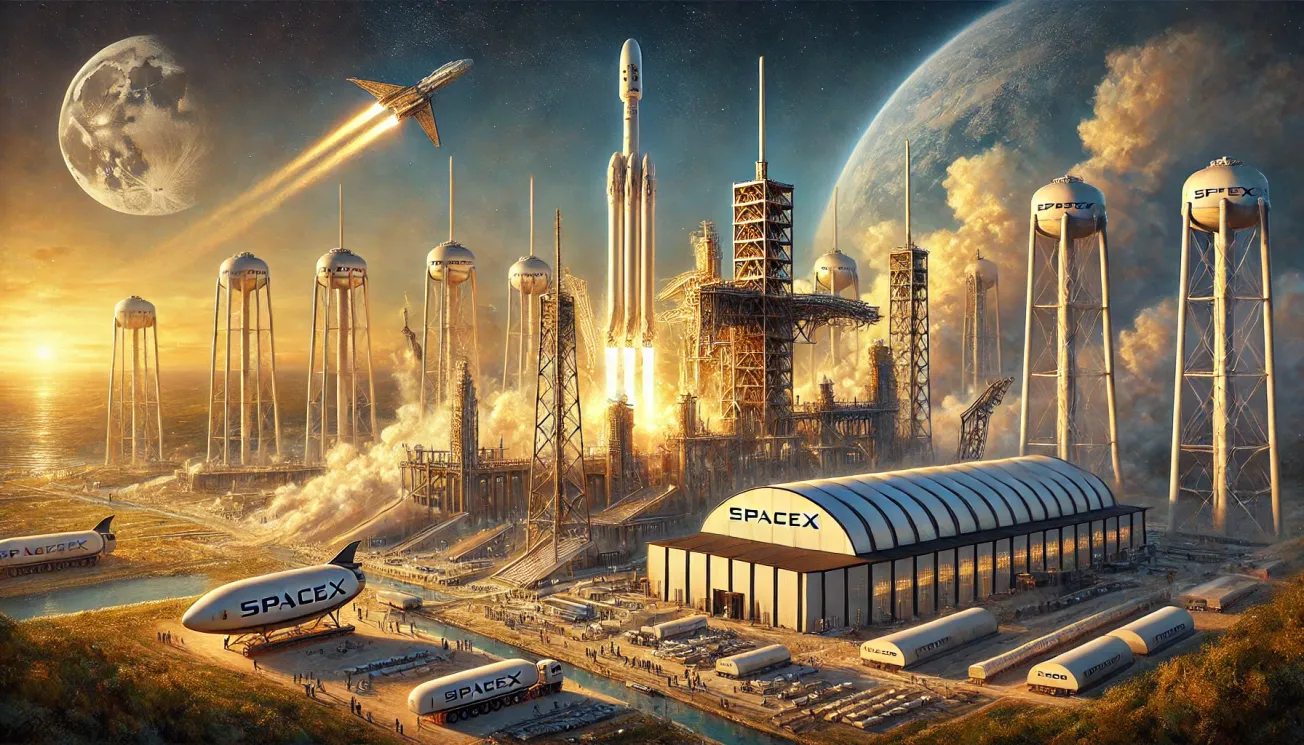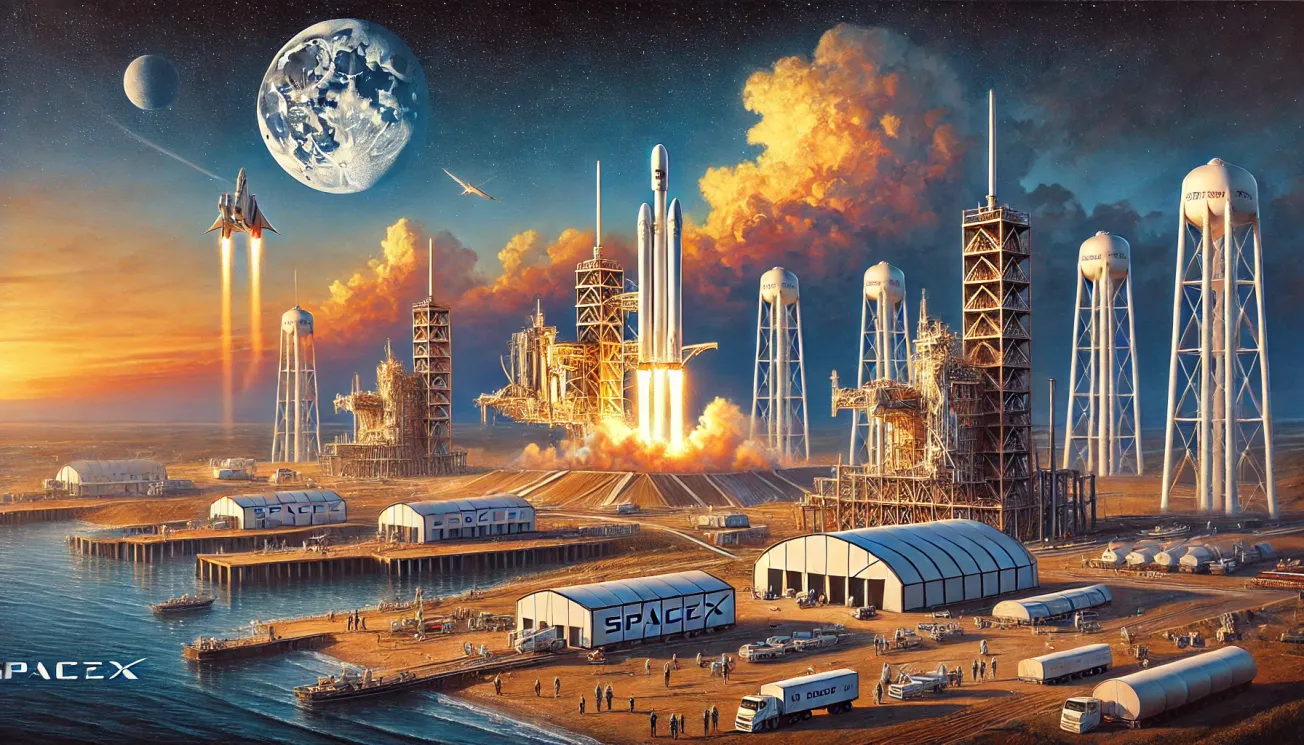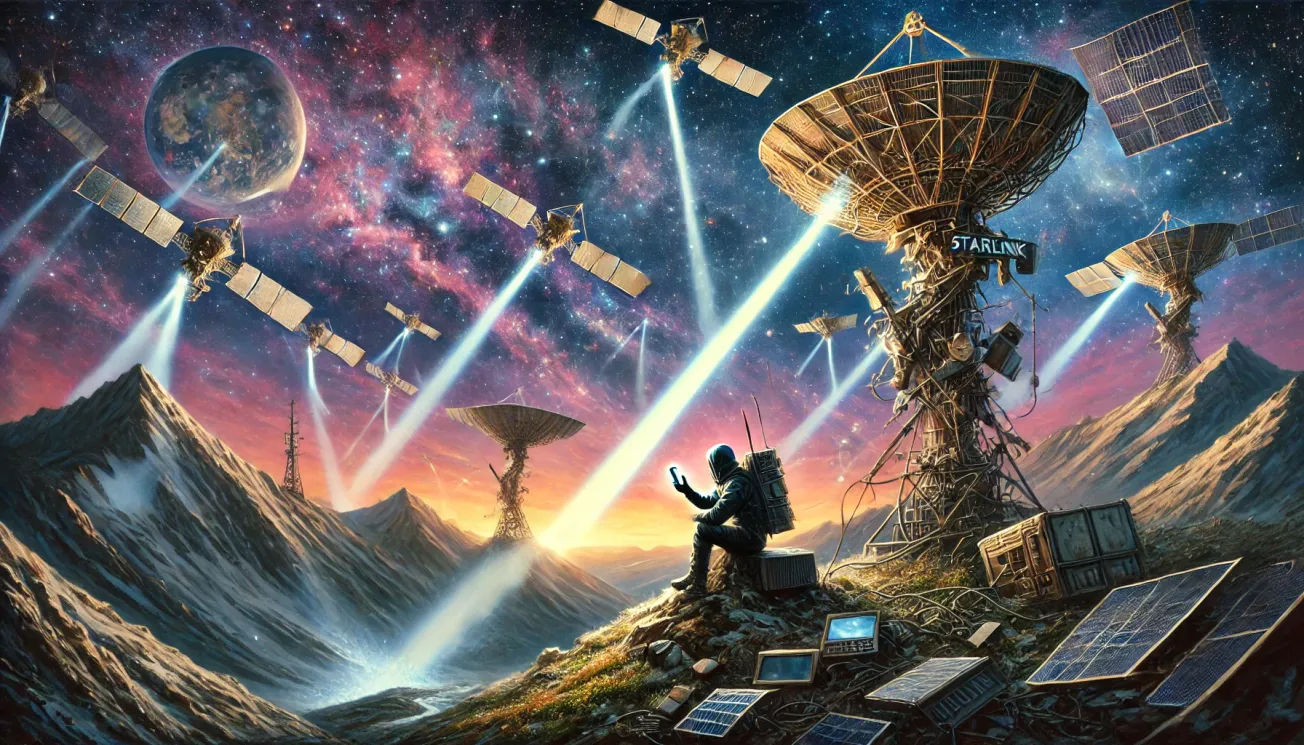Table of Contents
Introduction
Every time a SpaceX rocket lifts off, it doesn’t just leave Earth—it must also navigate through one of the busiest and most tightly controlled airspaces on the planet. With thousands of commercial and private flights crisscrossing the skies at any given moment, ensuring that a rocket launch does not interfere with aircraft operations is a complex and highly coordinated effort.
Avoiding collisions with aircraft is not optional—it’s a federal requirement enforced by the FAA (Federal Aviation Administration), the agency responsible for overseeing airspace safety. If a plane enters the launch area, SpaceX must pause the countdown, delay the launch, or, in extreme cases, cancel the mission entirely.
With rockets launching more frequently than ever, this coordination is becoming increasingly difficult. SpaceX now conducts multiple launches per week, sometimes from multiple sites in the U.S., requiring air traffic controllers, commercial airlines, and private pilots to adapt quickly.
In this article, we’ll explore:
✔ How the FAA and SpaceX work together to prevent aircraft-rocket collisions.
✔ What happens when an aircraft enters restricted airspace before a launch.
✔ How SpaceX plans its flight paths to minimize interference with aviation.
✔ The challenges of integrating spaceflight with commercial air travel as launches become more frequent.
Ensuring that rockets and airplanes can safely share the skies is an evolving challenge—one that will only become more complex as space travel increases.
Why SpaceX Needs the FAA to Clear the Skies Before a Launch
Before a rocket can launch, the FAA must approve and coordinate the airspace restrictions required to ensure that no aircraft is in danger. This is a strictly regulated process, and every SpaceX launch requires:
📡 FAA Licensing & Airspace Management
- The FAA’s Office of Commercial Space Transportation (AST) reviews every SpaceX launch request to assess potential risks to aircraft.
- Without FAA approval, a launch cannot proceed, regardless of technical readiness.
✈️ Temporary Flight Restrictions (TFRs) for Rocket Launches
- The FAA issues a Temporary Flight Restriction (TFR)—a designated "no-fly zone" around the launch site and expected rocket path.
- Pilots and airlines receive advance warnings and must reroute flights if necessary.
🕒 Launch Windows and Scheduling Considerations
- Rockets are not launched randomly—they follow strictly scheduled windows that consider both air and space traffic conditions.
- The FAA works with NASA, SpaceX, and military authorities to determine the safest time for launch.
Despite this planning, unexpected intrusions do happen, forcing SpaceX and the FAA to make last-minute adjustments to ensure safety.
How SpaceX Ensures No Aircraft is in the Launch Zone
To prevent a catastrophic collision between a rocket and an aircraft, SpaceX and the FAA take extensive precautions to clear airspace before every launch. This involves real-time tracking, strict coordination with air traffic control, and last-minute decision-making when necessary.
📡 Pre-Launch Airspace Monitoring
Before a launch, air traffic controllers and SpaceX’s flight operations teams work together to ensure the designated airspace is completely clear. This process begins hours before liftoff and continues right up until launch.
✔ FAA Air Traffic Control Coordination
- The FAA continuously monitors air traffic near the launch site using radar, flight tracking software, and pilot reports.
- If an aircraft is detected near the launch area, the FAA can issue immediate flight adjustments or instruct pilots to change course.
✔ Temporary Flight Restrictions (TFRs) in Place
- The FAA establishes a no-fly zone over the launch area, preventing aircraft from entering the restricted airspace.
- Pilots are notified in advance via the Notice to Air Missions (NOTAM) system, informing them of launch-related airspace closures.
- Airlines and private pilots must adjust their flight plans to avoid these areas.
✔ Real-Time Surveillance of the Launch Corridor
- SpaceX monitors aircraft movement in real-time using radar, telemetry, and tracking software.
- If an aircraft enters the launch zone, SpaceX may delay the countdown until the area is confirmed clear.
🛑 The Go/No-Go Decision Process: What Happens If an Aircraft Enters the Launch Zone?
Despite careful planning, there have been cases where an aircraft has accidentally entered restricted airspace, forcing SpaceX and the FAA to take immediate action.
🚨 Step-by-Step Response to an Unauthorized Aircraft in the Launch Zone:
1️⃣ Detection: The FAA identifies an aircraft within the restricted airspace.
2️⃣ Immediate Notification: The FAA alerts the aircraft’s pilot and instructs them to leave the area.
3️⃣ Launch Hold: If the aircraft does not clear the area immediately, SpaceX halts the countdown until confirmation that the airspace is safe.
4️⃣ Go/No-Go Decision: If the aircraft clears out quickly, the launch proceeds. If the delay is too long, the launch may be scrubbed and rescheduled.
📌 Example Incident: A Falcon 9 Launch Delayed by an Unauthorized Aircraft
- In June 2022, a SpaceX Falcon 9 rocket launch was delayed at Kennedy Space Center because a small private aircraft entered the restricted airspace just minutes before liftoff.
- The launch was put on hold, and the FAA instructed the pilot to exit the area immediately.
- Once the airspace was confirmed clear, the countdown resumed, and the rocket successfully launched.
These types of incidents are rare but serious, reinforcing the importance of strict airspace control before a rocket launch.
🚀 How SpaceX Optimizes Flight Paths to Minimize Air Traffic Impact
To reduce the likelihood of aircraft interference, SpaceX carefully designs its rocket flight paths to avoid congested airspace.
✔ Most Rockets Launch Over the Ocean
- To minimize risk, rockets are typically launched eastward over the Atlantic Ocean (from Florida) or over the Pacific Ocean (from California).
- This ensures that any debris or booster landings occur over water, not populated areas or busy air corridors.
✔ Careful Planning for Booster Landings & Staging Events
- SpaceX’s booster landings require their own airspace restrictions, ensuring that no aircraft is in the landing zone.
- The second stage and fairing separations are carefully mapped to prevent falling debris from interfering with aviation routes.
Despite these precautions, the growing frequency of launches is creating new challenges, especially as air traffic continues to increase worldwide.
The Impact of SpaceX’s Increasing Launch Frequency on Commercial Airlines
As SpaceX dramatically increases its launch cadence, air traffic controllers, airline operators, and pilots are facing new challenges in adapting to frequent airspace closures. The FAA and commercial airlines must now constantly adjust flight paths to accommodate an industry that once saw only a handful of launches per year but now witnesses dozens of launches each month.
✈️ How Rocket Launches Disrupt Commercial Airline Traffic
Unlike traditional air traffic, which follows predictable routes and schedules, rocket launches require temporary but sudden airspace restrictions. This can lead to:
✔ Flight Delays and Rerouting
- When a launch occurs, commercial airliners flying near Cape Canaveral (Florida), Vandenberg Space Force Base (California), or Starbase (Texas) must alter their flight paths to avoid restricted zones.
- This can cause longer flight times, increased fuel costs, and cascading delays across airline networks.
✔ Disruptions to Major Airline Hubs
- Airports near launch sites (e.g., Orlando International Airport, Miami International Airport, Los Angeles International Airport) experience more frequent flight reroutes due to space launches.
- Example: A Falcon 9 launch in 2023 forced flights out of Orlando to hold in the air for extended periods, increasing airline costs and passenger delays.
✔ Conflicts Between Airspace Priorities
- Unlike airplanes, rockets cannot simply "wait"—they must launch within specific orbital windows, meaning air traffic controllers must prioritize rocket launch clearance over scheduled airline flights.
- This puts pressure on both the FAA and airlines to balance commercial air travel with space launch operations.
🛰 SpaceX’s Global Launch Sites and the Challenge of International Airspace Coordination
SpaceX’s increasing number of launch sites introduces additional airspace challenges on a global scale.
🚀 Major SpaceX Launch Sites and Their Airspace Challenges:
1️⃣ Cape Canaveral, Florida – The busiest U.S. launch site, frequently affecting airline routes in and out of Orlando, Miami, and the southeastern U.S.
2️⃣ Vandenberg Space Force Base, California – Affects flights in Western U.S. airspace, particularly flights to Asia and the Pacific.
3️⃣ Starbase, Texas – Expanding into Starship launches, requiring large airspace closures near Mexico and the Gulf of Mexico.
4️⃣ Future Global Launch Sites – As SpaceX expands internationally, it must coordinate with Eurocontrol (Europe), ICAO (global aviation body), and CAAC (China’s Civil Aviation Authority) to avoid global air traffic disruptions.
🌍 International Collaboration for Spaceflight Coordination
- The FAA is working with other aviation authorities worldwide to streamline global space launch coordination.
- The growing number of commercial space companies (Blue Origin, Rocket Lab, Astra) means even more launches will require international airspace management.
🚀 The Challenge of SpaceX’s Reusable Rocket Landings
SpaceX is not just launching rockets—it’s also landing them, creating an entirely new layer of airspace management.
✔ Booster Landings Require Additional Airspace Closures
- After launching, Falcon 9 and Falcon Heavy boosters return to Earth, either landing on a droneship at sea or on a dedicated landing pad on land.
- The FAA must clear an entirely separate airspace corridor for returning boosters, doubling the complexity of airspace closures.
✔ Starship’s Future Impact on Airspace
- Starship’s enormous size and long-distance flights will require even larger airspace restrictions, particularly as it expands to orbital flights, Moon missions, and Mars missions.
- The orbital refueling process for Starship could create entirely new airspace challenges, requiring multiple launches per mission.
🌎 The Future of Airspace Management for Spaceflight
As commercial spaceflight continues to grow, both SpaceX and global aviation authorities will need to develop new methods for integrating rocket launches into traditional air traffic systems.
✔ Automated Air Traffic Management Systems
- The FAA is developing AI-powered dynamic airspace allocation systems that can automatically adjust airspace restrictions in real-time.
- This could reduce launch-related airline delays by allowing aircraft to reroute more efficiently and dynamically.
✔ Dedicated Space Launch Corridors
- Some aviation experts suggest creating permanent launch corridors, similar to highway systems, where launches follow consistent paths that air traffic can more easily predict and avoid.
- If space tourism grows, this could significantly reduce disruptions to commercial aviation.
✔ Global Standardization of Space Launch Airspace Rules
- Future collaborations between the FAA, ICAO, Eurocontrol, and other international aviation bodies could lead to a universal system for managing spaceflight airspace.
🛰 Conclusion: Balancing Space Launches with Air Travel
SpaceX and the FAA have developed effective methods for ensuring that rockets do not interfere with aircraft, but as space launches increase, the challenge of airspace management will become even more complex.
📌 Key Takeaways:
✅ SpaceX and the FAA work closely to clear airspace before launches, preventing aircraft-rocket collisions.
✅ Rocket launches impact commercial air travel, causing delays, reroutes, and airspace restrictions near launch sites.
✅ Reusable rocket landings introduce new airspace challenges, requiring separate flight corridors for booster returns.
✅ Future space missions will require smarter airspace management, with AI-powered tracking and permanent launch corridors to reduce disruptions.
🚀 As spaceflight becomes a routine part of our world, air travel and rocket launches must coexist—making airspace coordination more critical than ever.










